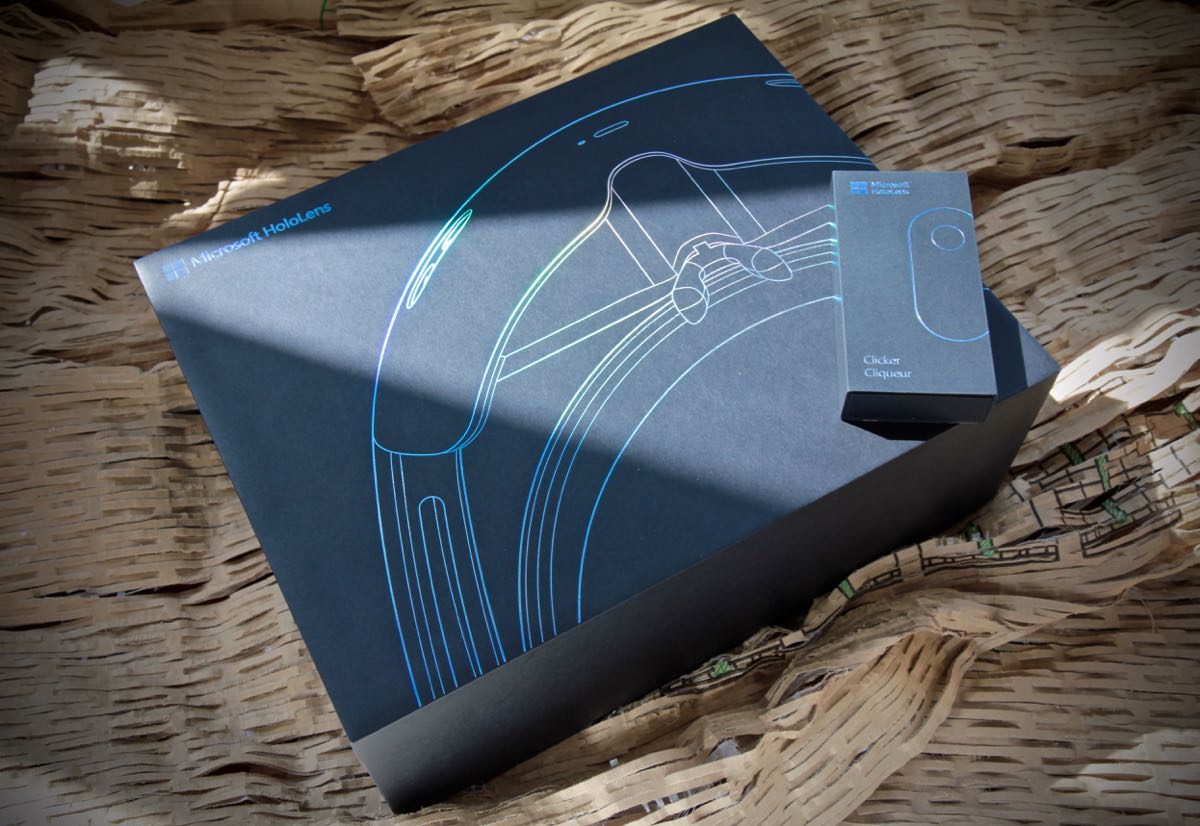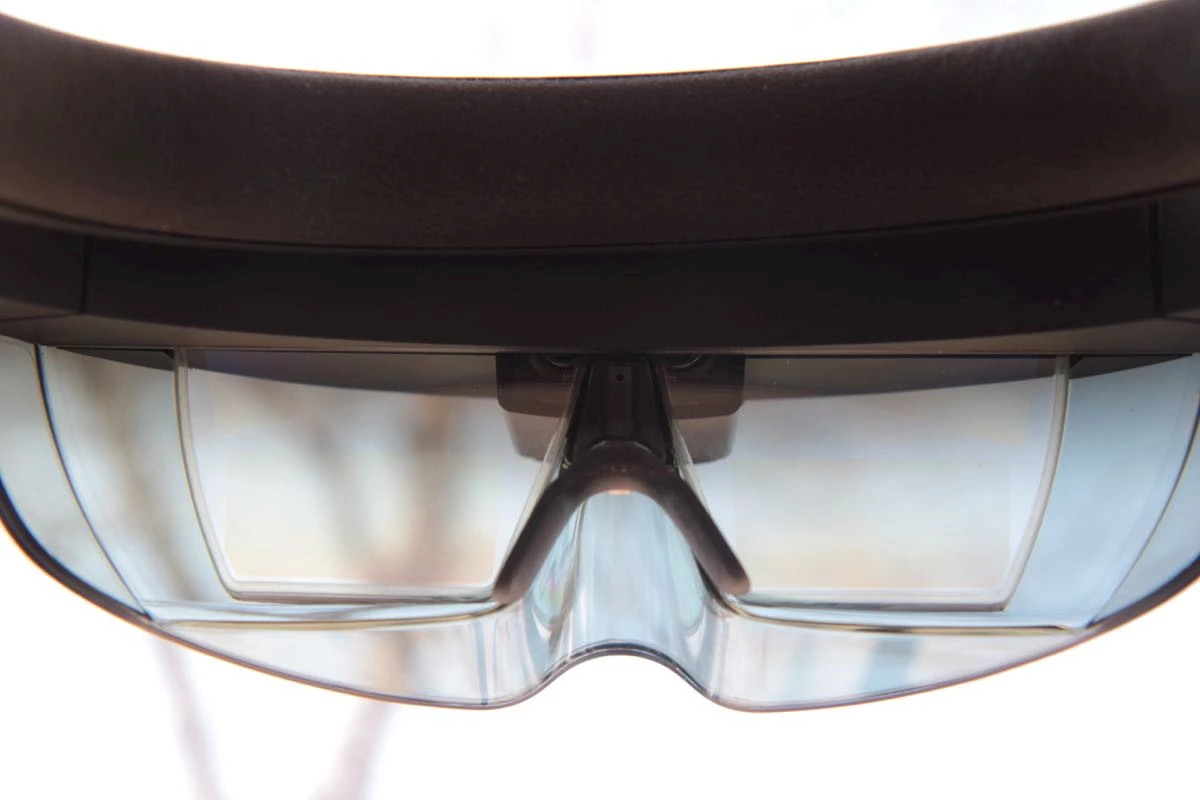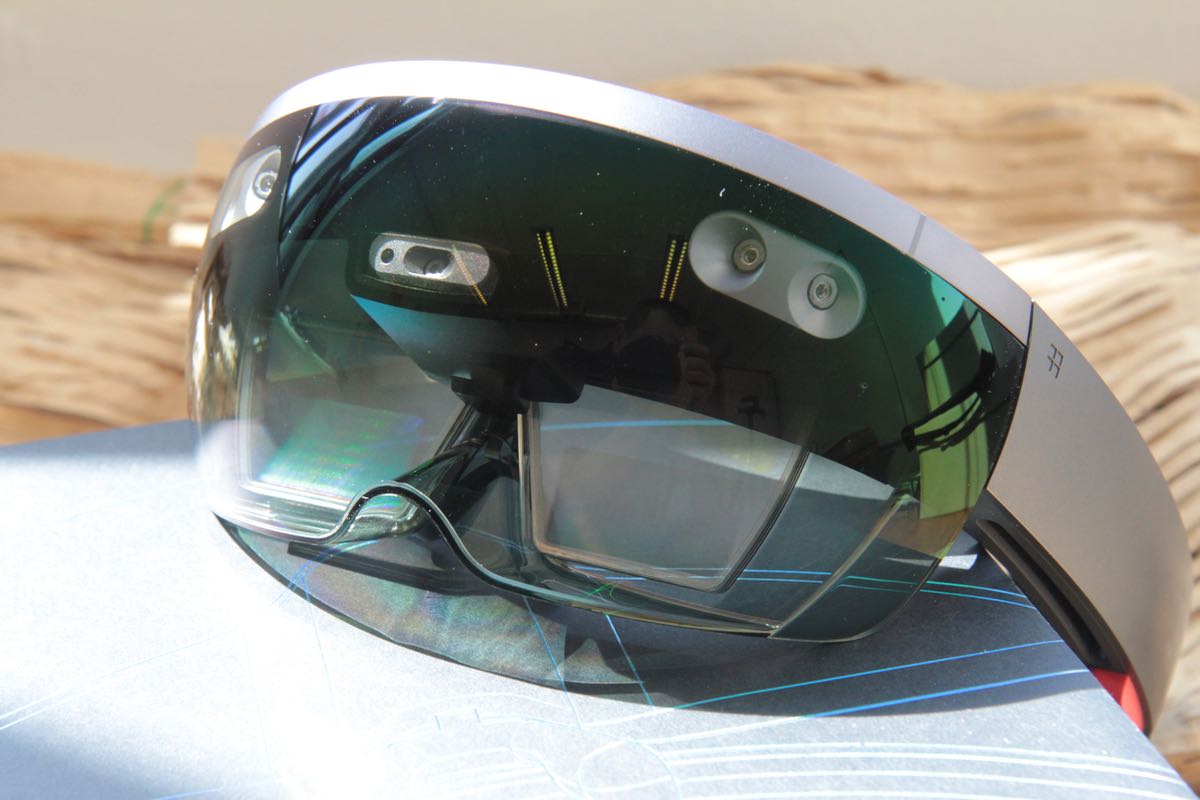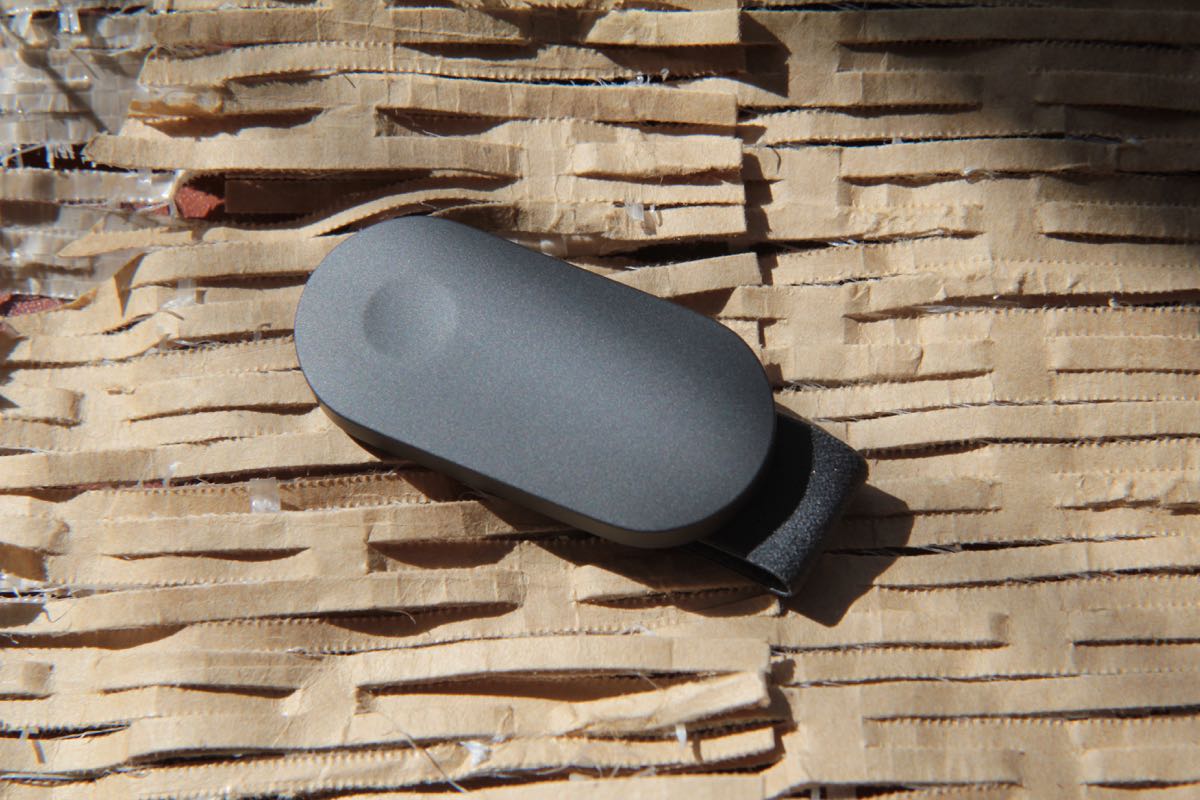HoloLens, A Glimpse of the Future
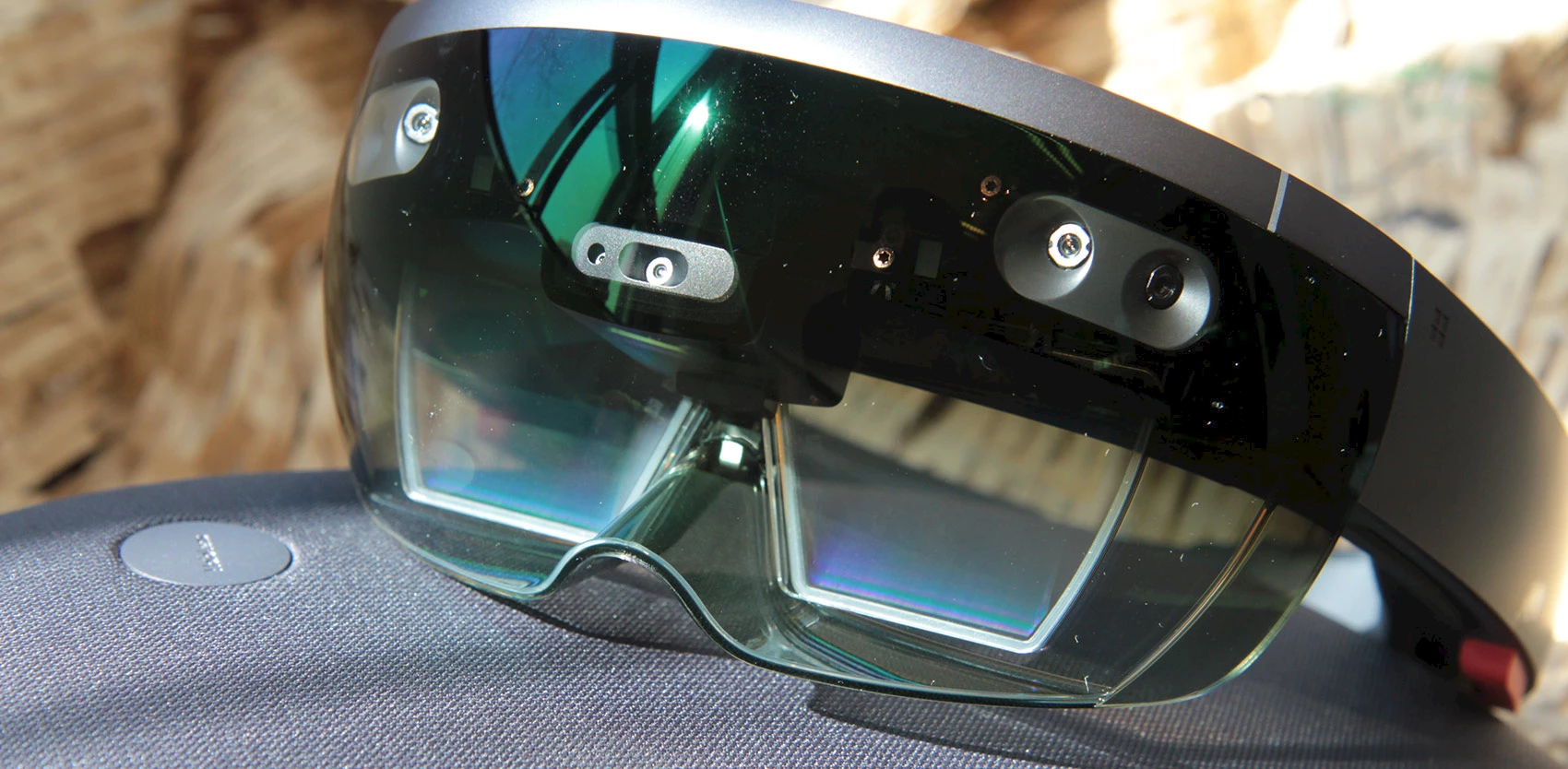
We’ve got one! We were able to get our hands on a HoloLens, though not before we parted with US $3,000. At the beginning of the month, Microsoft shipped the first wave of Development Edition HoloLens to selected developers and business partners. For the time being, shipping is restricted to the United States and Canada.
Unlike Oculus Rift or HTC Vive, HoloLens is not an immersive virtual reality headset but rather a pair of augmented-reality glasses, much like a far more evolved descendent of Google Glasses. In other words, these glasses do not isolate you from your environment; they embed 3D elements into your perception of your environment.
[Photo: Boxes, Microsoft HoloLens Development Edition and Clicker.]
The glasses are bulky, making the wearer look like Robocop. This is forgivable, however -- after all, you are wearing a full-fledged computer with powerful graphic capabilities running on a modified version of Windows 10, as well as batteries and a sophisticated projection device. That being said, the HoloLens is much lighter than it looks, weighing in at just under 600 grams, and is rather comfortable once adjusted for size.
The display does not encompass the entire field of vision, covering just the equivalent of a 16:9, 15-inch monitor, which is somewhat disappointing. Wearers end up swivelling their head madly to try to find an object lost in virtual space, since the glasses offer too small a window on this universe. Just like traditional glasses, there are two separate lenses, or screens, onto which images are projected (1268 x 720 pixels per eye). These delicate screens are protected by a plastic shell that is tinted on the outside. Display resolution seems sufficient and objects are bright and crisp, though sometimes marred by rendering bugs that are not due to the displays.
[Photo: Inside view.]
On either side of the forehead there is a pair of cameras dedicated to spatial analysis. In the middle is a 2-megapixel video camera, as well as a sensor, called a depth-sensing camera, to detect movement and distance (sort of like a miniature Xbox Kinect). This camera senses the movement of your hands, for example when you point a finger at a virtual object, or when you open your hand palm-up, which is the signal to go back to the Start menu. All four side-cameras and the centre sensor work together to calculate 3D representations of the environment in real-time, which is quite a feat. The HoloLens contains another, internal sensor (the inertial measurement unit, IMU), as well as an ambient-light sensor. Images supplied by the centre camera, along with the 3D virtual additions, are recorded to make an augmented reality video like the one used in the demonstrations. When the camera is in use, the HoloLens switches from 60 to 30 fps.
[Photo: On the sides, a pair of cameras analyse the environment. In the middle, a 2-megapixel video camera and a sensor, called depth sensing camera.]
If you were to take the HoloLens apart, you would find a complete PC on the inside, which sets HoloLens apart from virtual reality headsets, since they rely on a separate computer to perform calculations. HoloLens is not a peripheral to a computer or a console; it is a computer in itself.
The motherboard holds a 32-bit Intel processor (CPU), a graphics processor (GPU) and a processor that was custom-developed for Microsoft, called Holographic Processing Unit (HPU). The HPU processes the masses of data generated by the various sensors performing spatial analyses. The small motherboard also holds 2 Gb of RAM, 64 Gb of Flash memory, a Wi-Fi chip and Bluetooth. Batteries (model unknown) are grouped in 3 modules per side, or 6 modules in total. Fully-charged batteries have a lifespan of 2.5 hours under intense use or 5.5 hours maximum and two weeks on standby. Batteries are recharged via Micro-USB cable.
With this introductory model of the HoloLens, some developers will hit the ceiling of 900 megabytes of RAM per application, which is to be expected with a total RAM of 2 gigabytes. Also, in order to protect passively-cooled components, Windows summarily shuts down any program that overheats the processor.
[Photo: The “Clicker”.]
The HoloLens comes with a navigational aid, called the “clicker”. It attaches to the middle finger and communicates with the headset via Bluetooth, enabling user interaction with virtual interfaces to select, click and move, scroll vertically and horizontally and zoom.
Analysis
Alex Kipman, the developer of Kinect, then supervisor of the Baraboo project, which evolved into HoloLens, has announced that the glasses will have a consumer release only when the market is ready for it. We get the feeling that Microsoft developed the HoloLens without really knowing what exactly it would do, or how it would be used. It’s as though this “developer edition” were in fact a fishing expedition, a testing of the waters. The message seems to be, “Developers, we like you, we’ve created this fun toy for you, let’s see what novel uses you find for it”. And I have no doubt that it will indeed be put to brilliant use.
Totally immersive virtual reality is going to take the public by storm. But I wouldn’t say as much for augmented reality, at least for the foreseeable future. In fact, I don’t think there will be much of a market for 3000-dollar augmented reality glasses, or even 2000-dollar ones. Once the novelty of pseudo-holograms wears off, these glasses are going to be set aside, unless someone comes up with a truly revolutionary application for augmented reality. As for gaming, people don’t really want to always game in a familiar environment, usually their own home, even if it is augmented. Besides, virtual reality headsets can also provide the augmented reality experience with built-in cameras. HoloLens may have a future in educational and professional applications. Though I am skeptical about this product as it currently stands, it does have potential for the future. Here at Spiria, some of our developers are very excited by the HoloLens, lining up to try it and thinking up novel applications for it. Watch this space for further articles on HoloLens’ capabilities and programming potential.
HoloLens as it stands is still at the experimental phase, a mere prototype. With its current specifications, it is difficult to imagine a commercial future for it, especially due to its relatively limited display and high cost. This said, it will be very interesting to see how this fledgling but promising technology grows and evolves, and how it will be repurposed in future applications. HoloLens’ main quality is to put the future within our reach, to give us a taste of these technologies which until recently belonged to science fiction. HoloLens version 1 is a tasty morsel that has us asking, “where’s the beef?”.
What’s Hot
- Autonomous device not linked to a PC.
- Ease of use.
- Excellent spatial sound (binaural sound).
- High-quality fabrication.
- Window on the future.
What’s Not
- Limited display field.
- Mediocre battery life.
- 3D reconstruction of the environment sometimes “off”.
- Eye strain and fatigue under prolonged use.
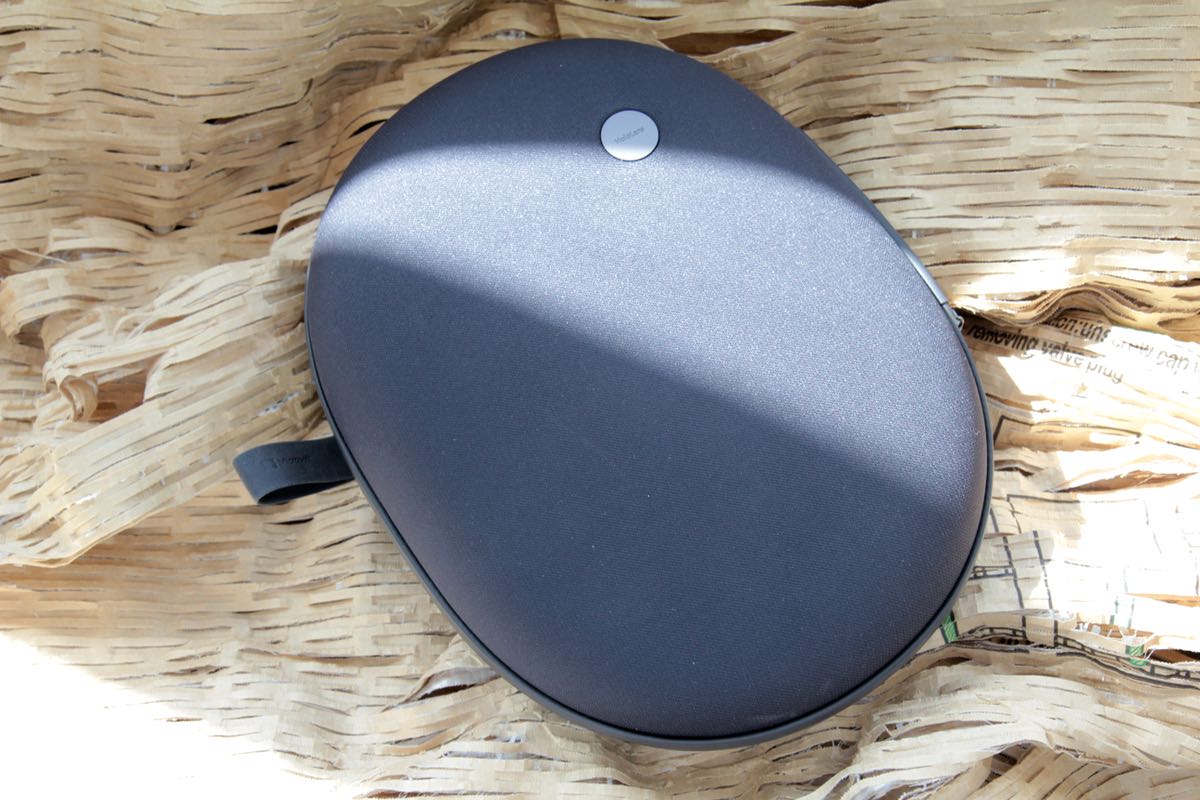
Storage case.
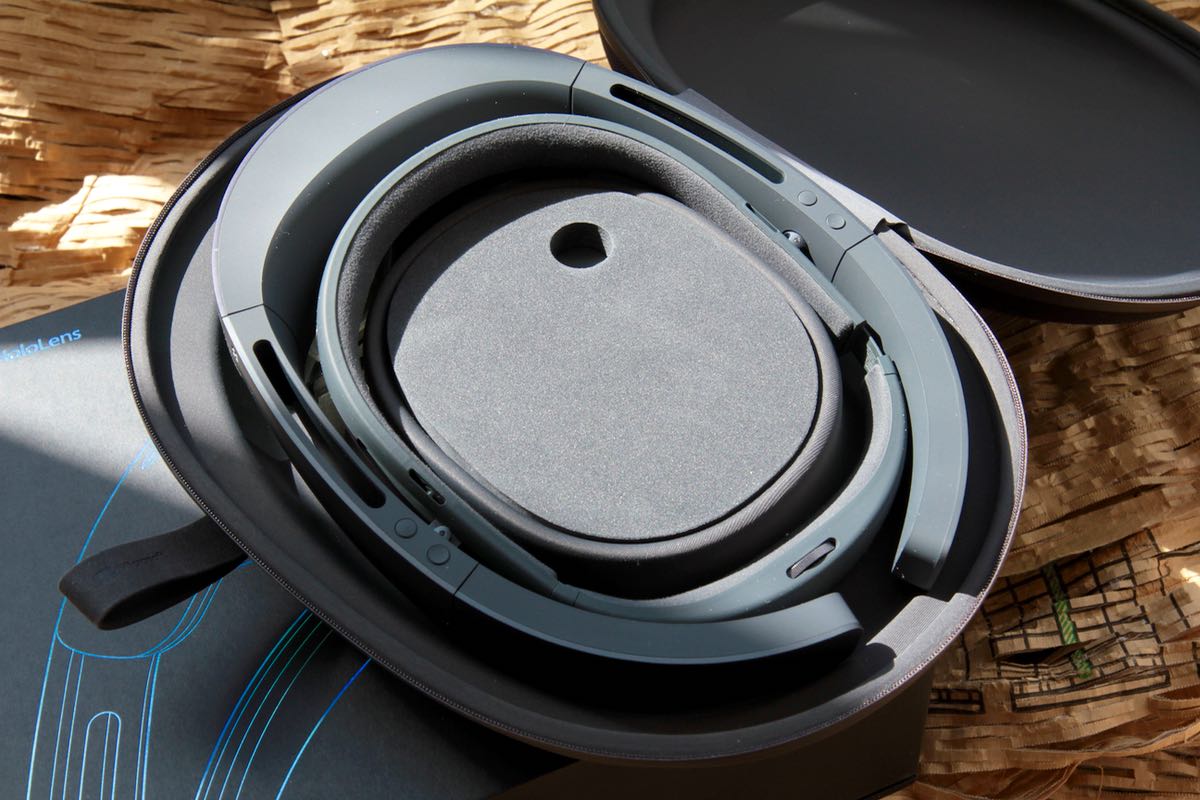
HoloLens glasses in storage case.
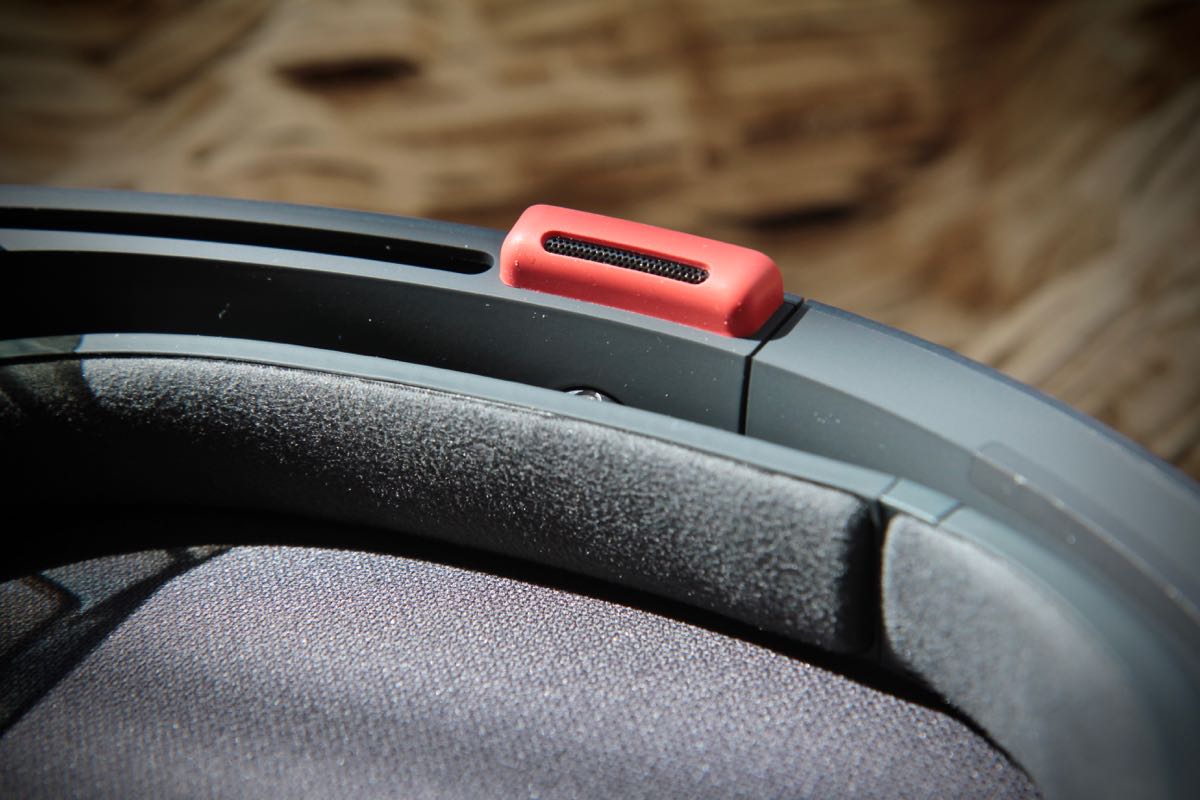
Side-speaker.
[Photos: Laurent Gloaguen, Spiria.]
—
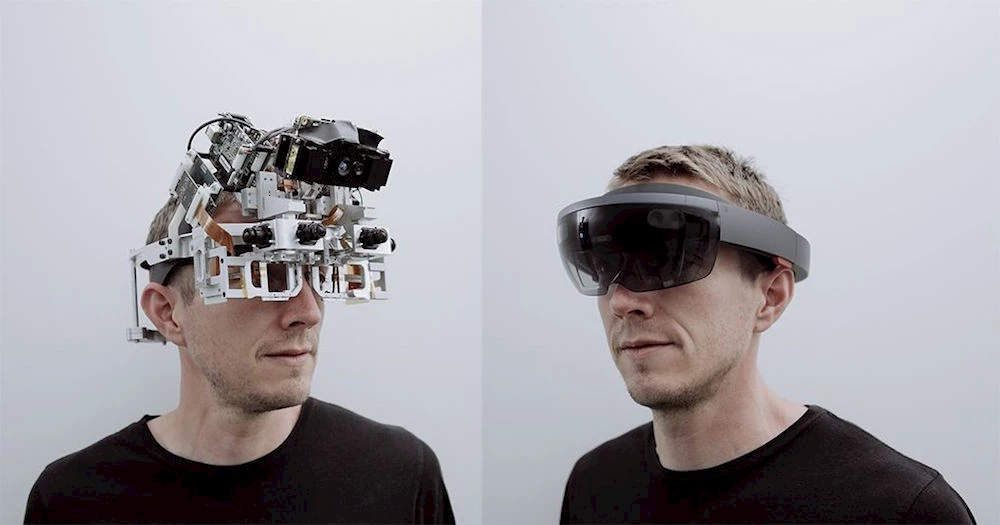
Above, “cyberpunk” prototype, circa 2013, and 2015 design.
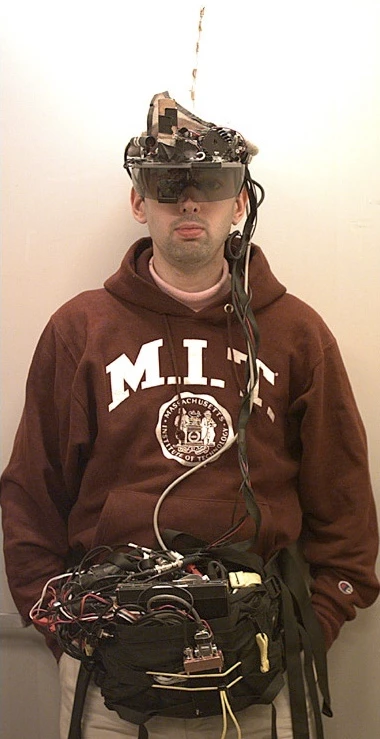
Another prototype, with a PC in the hip pouch.
—
Unpacking of the “Development Edition”.
Microsoft’s promo video.
—
